Creation of a felted Osprey chick
By Hilary Powers
Bid high for the baby Osprey in the Birdathon auction – you may never see another!
When Golden Gate Bird Alliance called for donations of services or experiences (not stuff) to fit this year’s theme, I had to stop and think, because stuff is what I do: true-life replicas of creatures natural or imaginary, captured in wool and beeswax and steel.

So how about a choose-your-own baby bird? That’d be an experience, I wrote, and we could set the prize to track the winning bid, starting with a duckling and offering bigger (or more) birds the higher the bidding went. As long as the winner selected a nestling at the downy stage, I figured all choices would be equal. More fool I….
Why specify a baby? Adult birds have feathers. And feathers are living miracles. With my skills and goals, long feathers are insanely difficult to get right. But I’d spent countless hours editing with nestcams on a second screen, and I’d already built a duckling, an owlet, a few eyases, and even a California Condor. So I (thought I) knew: baby bird = fluffy coat, likely all or mostly one color, probably white = something wool would do easily.
After pouncing on the idea, the GGBA folks came back and asked if I could make an Osprey for them instead, as that would fit in with their live Osprey nest cam along the Richmond shoreline. Sure, sez I, choose-your-own was just a way for stuff to masquerade as experience.
Then I started looking at Osprey nestling pics. Oops. Unlike falcons and owls and hawks and eagles and condors, baby Ospreys are never white and fluffy. Ospreys hatch as little dinosaurs and stay saurian until their body plumage comes in, along with all those lovely, complex flight feathers.
But yes had been said, and a challenge has its own delights.
Work started March 12 with research: collecting dozens of images (many from Golden Gate Bird Alliance’s webcam videos) and reading up on development. When do pinfeathers start? Way too soon. What’s the eye color? Depends on the day; blue at first but turning blood red after “a few days” (how many, nobody says). What’s the length, beak to tail? Again, depends on the day; happily I found a pic where someone had set a ruler inside a nest of chicks about the right age.
The right age turned out to be roughly one week – old enough for warm eyes and young enough to avoid all-over pinfeathers. I began with the eyes, blending steel blue and crimson wool, felting it into pairs of little eyeballs with black silk for pupils, and starting the long dip-and-dry process. Next I sketched dimensions and built an armature for the body, captured in pic 2 alongside the Salt Marsh Harvest Mice I’d been working on when the Osprey project started.
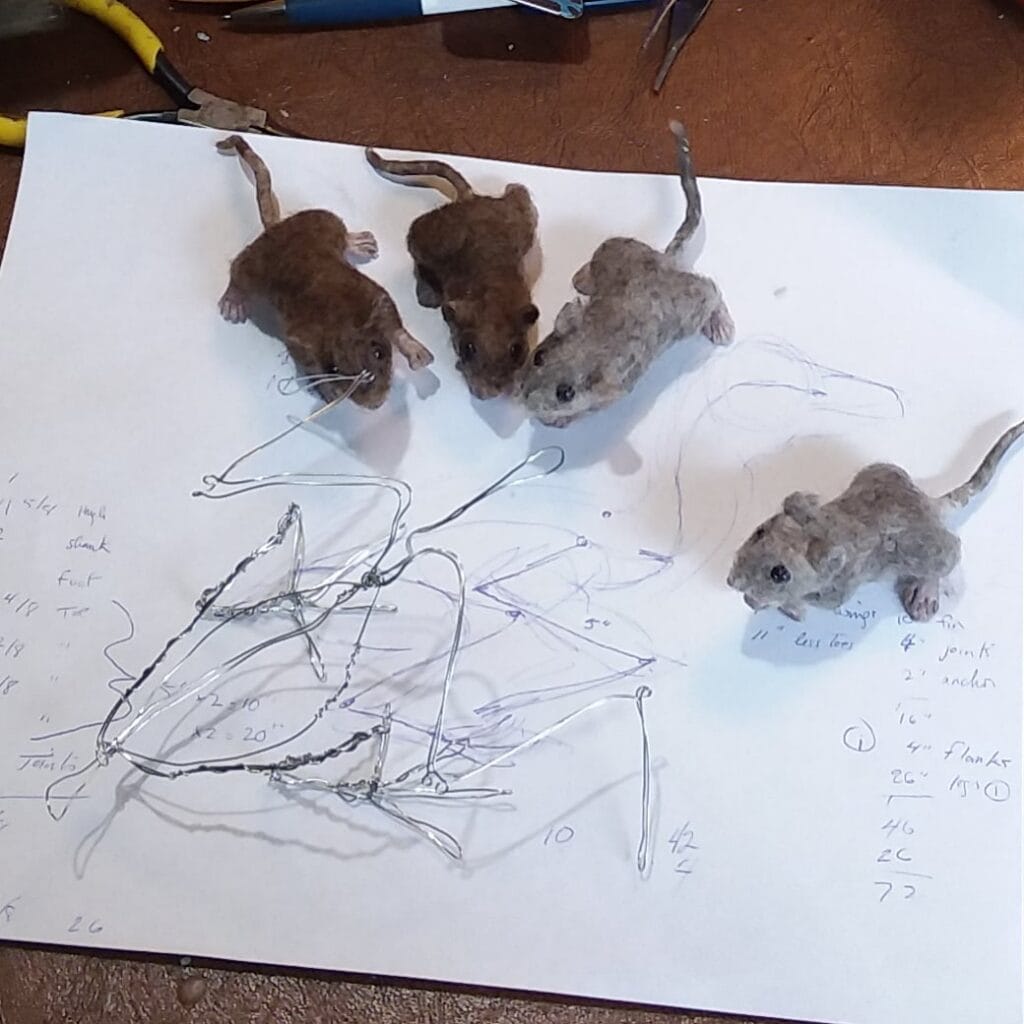
The beak was next – one armature for the upper mandible and another for the lower, with wool (bright pink inside, black and white outside, pink tongue) needle felted, wet felted, and then needle felted onto the wire and saturated with melted beeswax before assembly. While the wax was hot, I also built claws onto each toe with black wool, dipped and modeled into shape like clay. Pic 3 shows the armature with claws, the finished beak, and the eyes-in-progress.
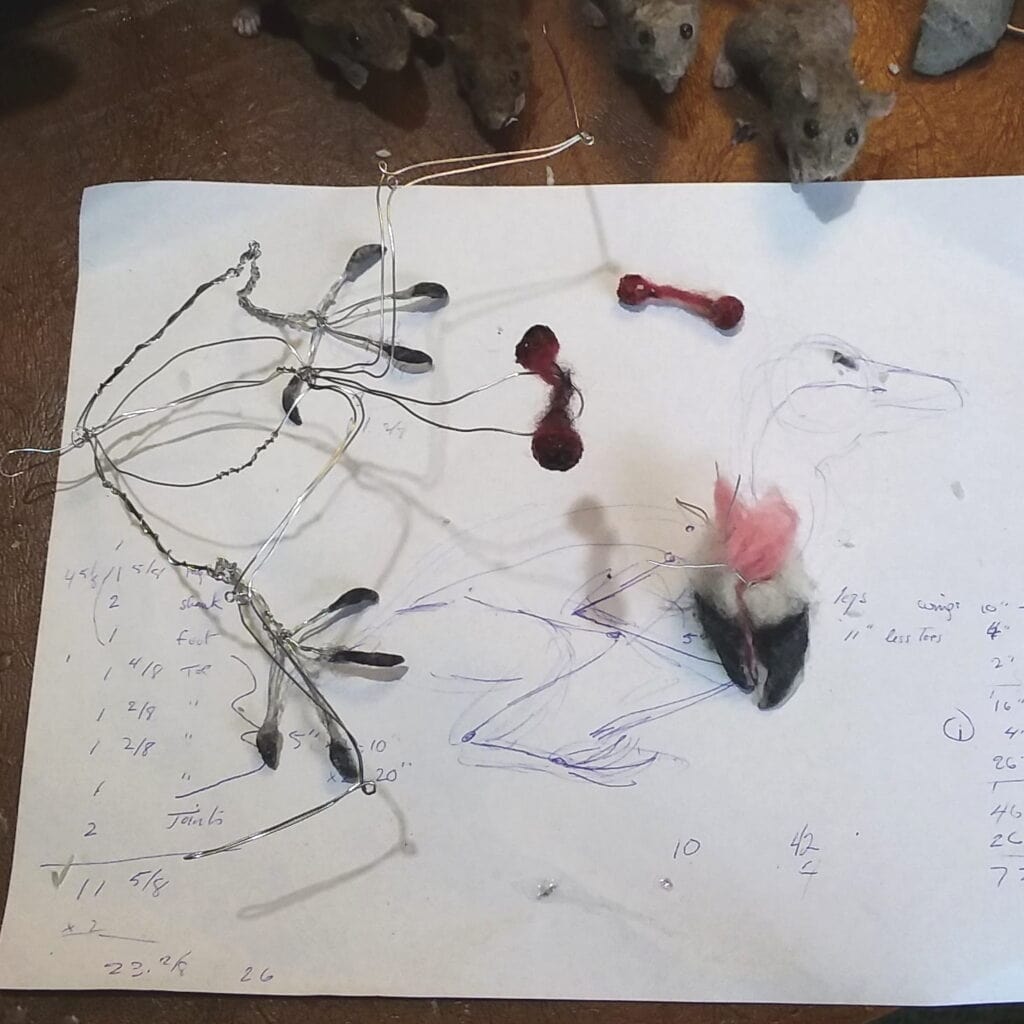
Taken that afternoon, pic 4 shows the armature wrapped in core wool, the belly felted full, and the beak wired in place. (The beak looks huge because, as on a living bird, most of it belongs inside the head. A lot of the craft of this sort of craft involves seeing what insides will make the outsides work properly.)

The next task was to bulk up the feet with gray wool, leaving them looking a bit like baseball gloves (pic 5). The toes really are where they should be here. A grown Osprey mostly carries them one-back, three-forward, turning a second toe back for fish handling, but this baby’s feet quite properly sit like little hands.
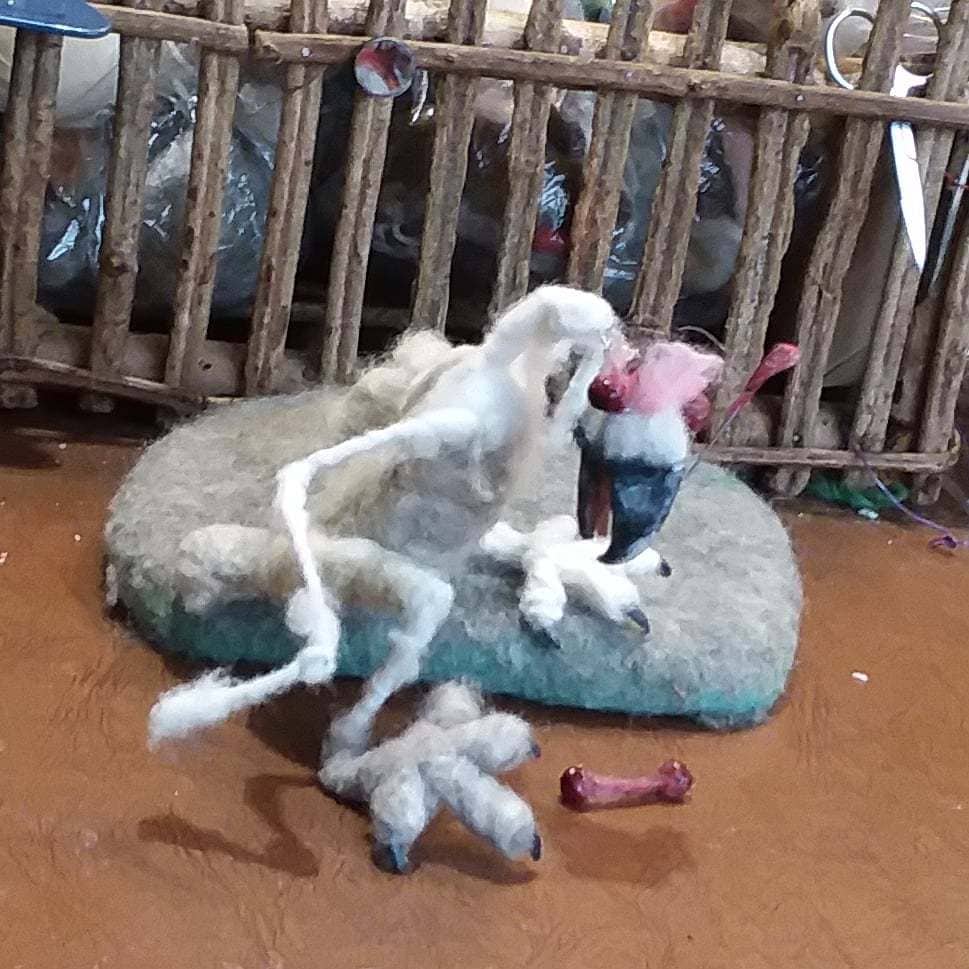
Eventually, the feet were down to size, courtesy of another dose of beeswax, and a layer of wet-felted wool outlined each wing. The chosen eyes were needle felted into the head over the back of the beak. Pic 6 captures the point where my right thumb started to complain, the mice moved to the front of the workbench, and I returned to their pickleweed stands – which are braided and waxed but not felted.
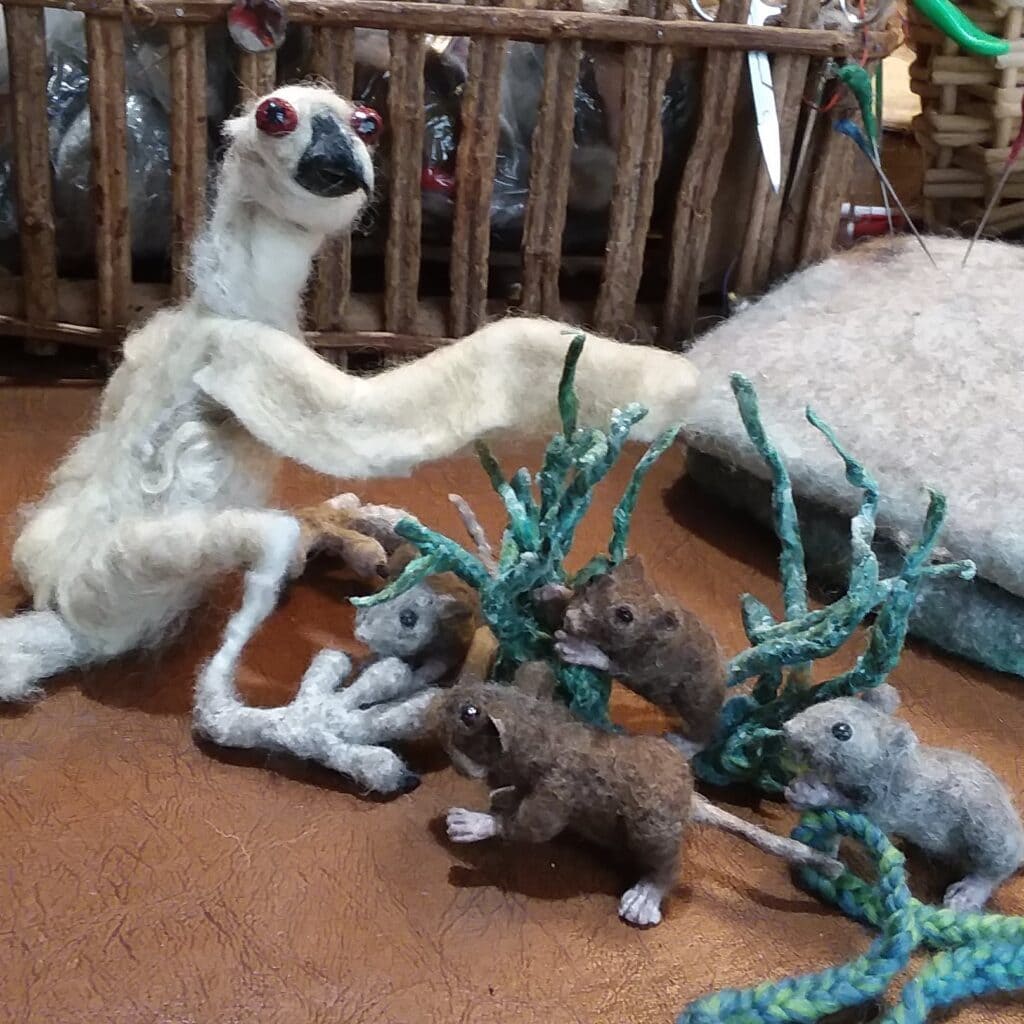
After several days’ rest, Osprey and I moved into the office for my weekly online play-reading and role-playing sessions, along with wool to add to the body, legs, and neck. Pic 7 comes from the end of the day, when the little guy was starting to look almost real and my hand needed more rest. (Why hand problems? A felting needle is a 3.5″ steel spike; you hold it like a pen and jab your work over and over, picking up wool strands on the barbs cut into the spike’s sides and tangling them into a denser and denser mass. It’s a pleasant and satisfying motion – yaah, gotcha; gotcha again! – but also a recipe for repetitive strain.)

Then, after more rest and a couple of hours’ needle felting (more muscle, fill the crop, add some eye liner), it was time to set up the wet-felted outer skin, color patterns and all. That meant stacking wool in layers like plywood (pic 8) to be pressed flat with hot water and olive oil soap, rolled in a bamboo mat, and rubbed back and forth and back and forth and back and forth for three minutes (a lot longer than it sounds!), and then washed and rinsed and ironed out….
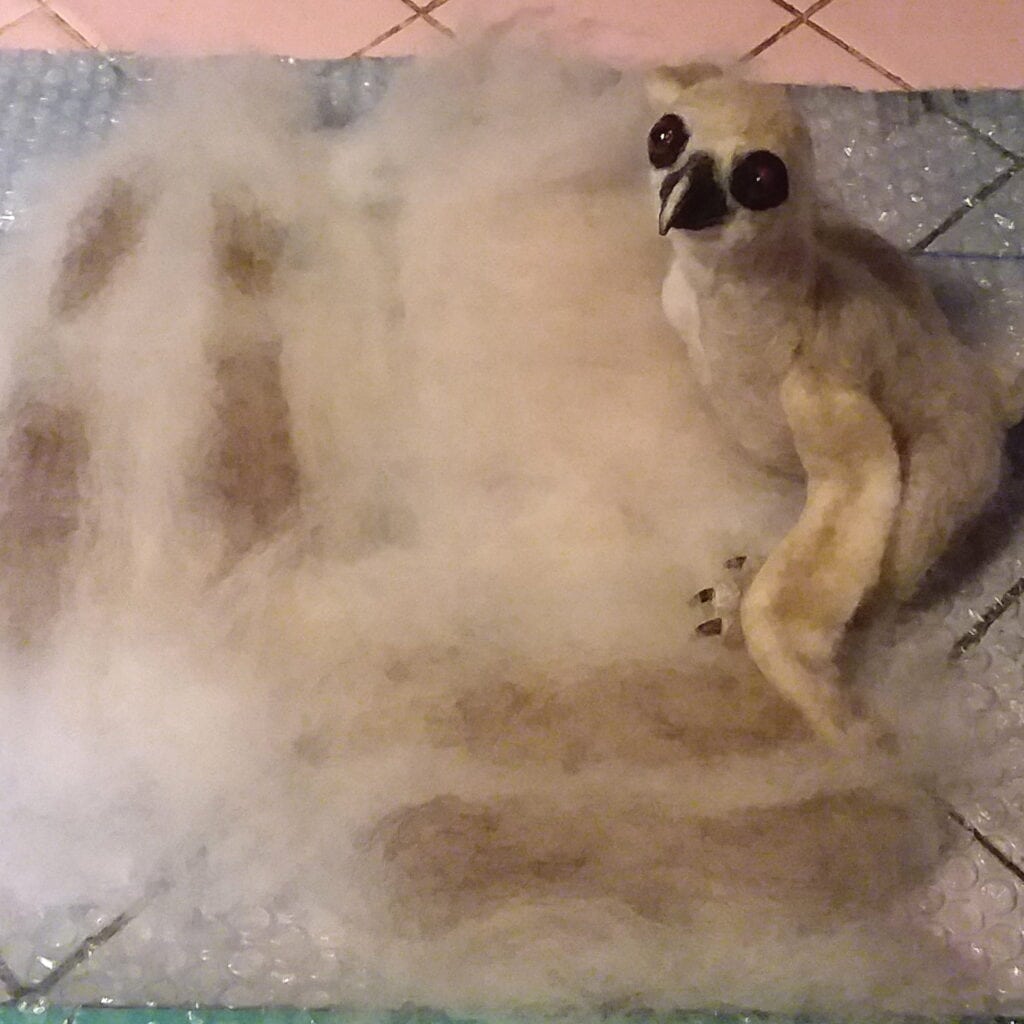
As soon as the skin went on, the eye-liner disappeared, making for the sadly disgruntled little bird in pic 9. All that new wool ruined the lines of the head and shoulders, too.
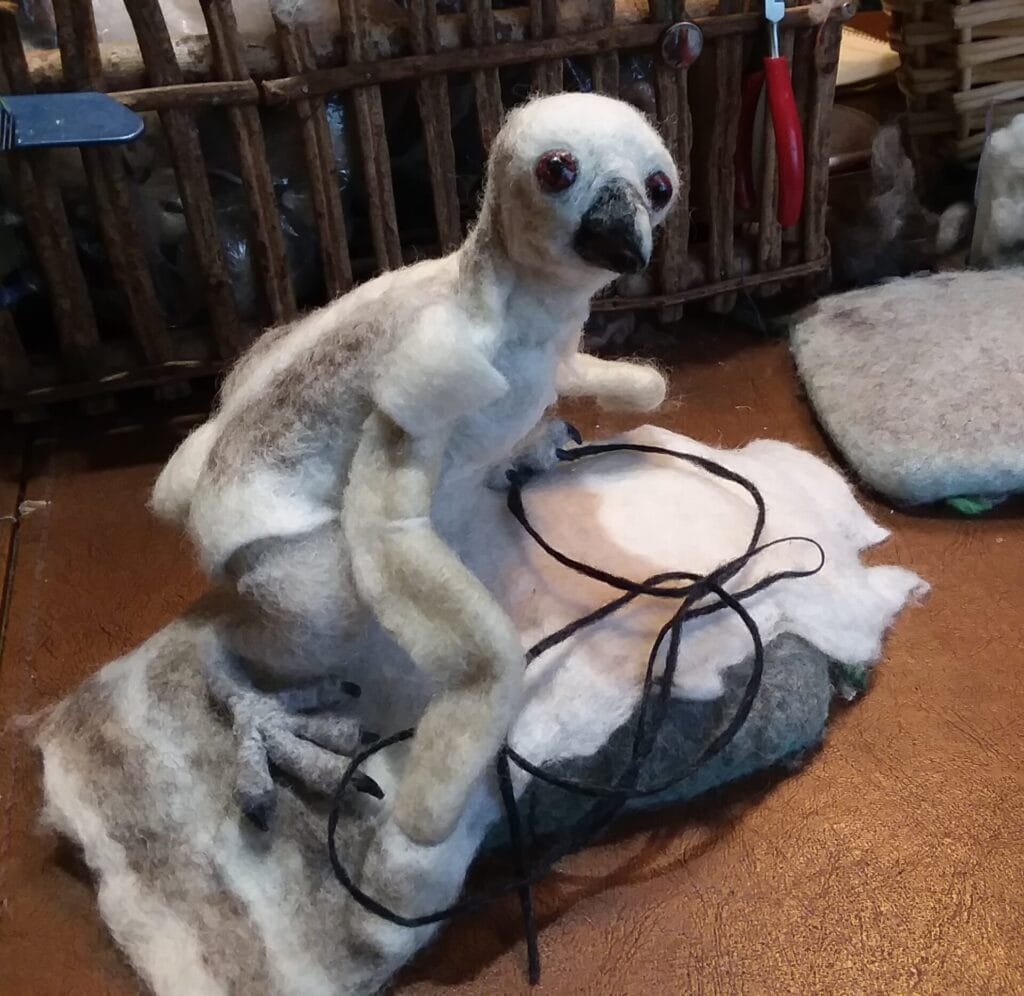
Over the next day or so, Osprey got several sessions of heavy-duty felting with a 5-needle tool, forcing the added bulk back down to a slim silhouette. In the process, I reshaped the head to give the baby the proper hollow-cheeked, bug-eyed look and added color around the eyes. Then I trimmed the outer layer to fit the wings (pic 10) and needle-pounded it down to size.
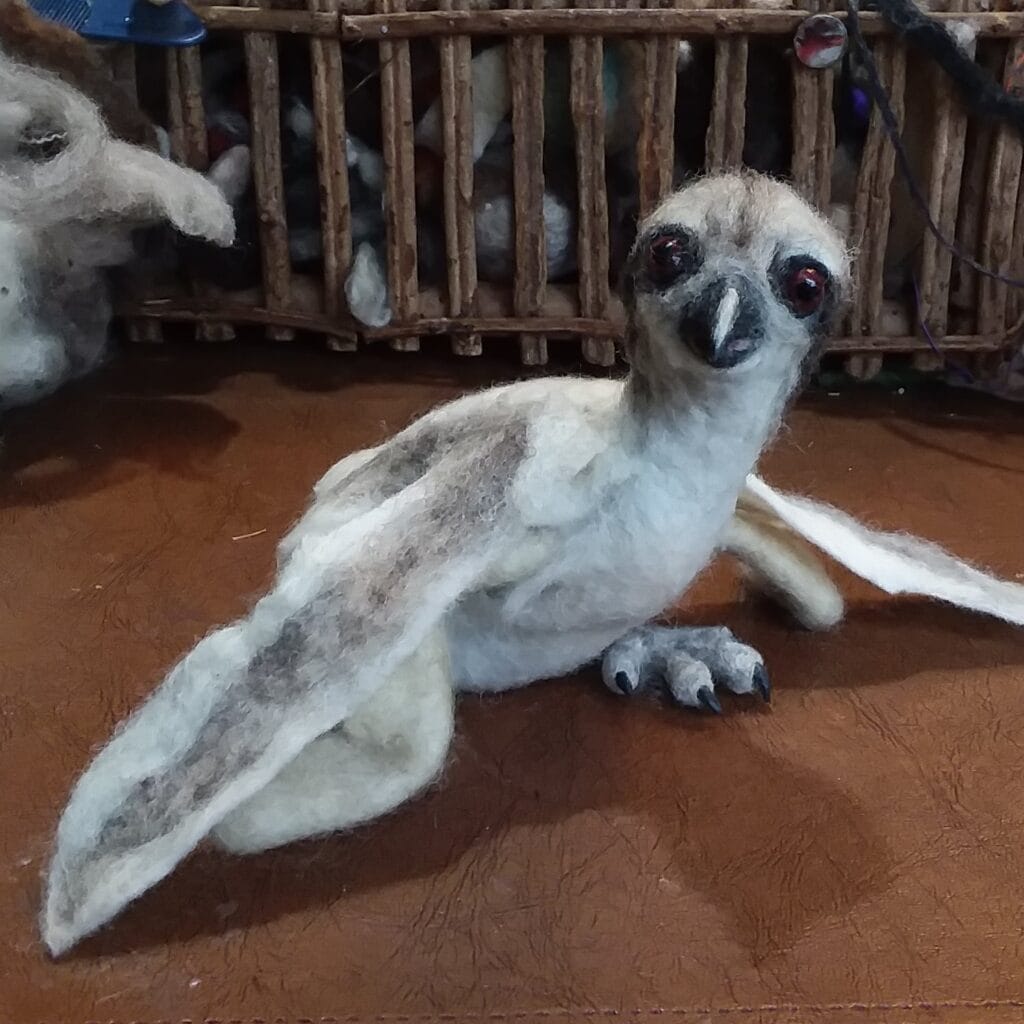
Final grooming took most of a week – blending the coat segments together, fitting a neat little cloaca, using a tiny crochet hook to pull core wool through the coat for a bit more down. At this stage it always feels like something is demanding action, and then something else – until suddenly all goes quiet: the figure turns true and refuses any further work. Then it starts looking for a new home…. maybe yours?

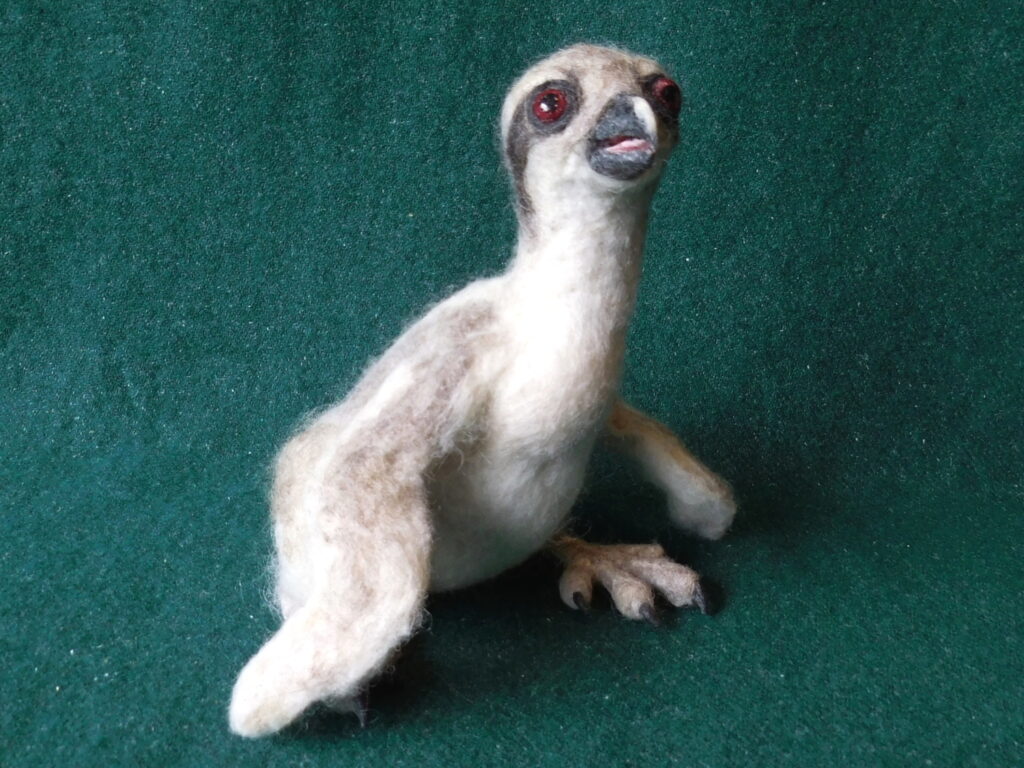
Hilary Powers has been building creatures for seventy years, using whatever came to hand: plasticine, paraffin, papier-mâché, terra cotta, candy wrappers, wire and gemstones, polymer clay, and (starting Thanksgiving Day 2009) unspun wool, always infused by her fascination with comparative anatomy and natural fitness. Her current work combines new wool-working skills with everything that came before – most notably wire sculpture and wax handling – to create beings caught in a moment, as though about to fly or scuttle or slither away and go on with their lives. View more of her work at salamanderfeltworks.com. You can see a full Osprey portrait set at salamanderfeltworks.com/Creature_Page.php?CR=398.
